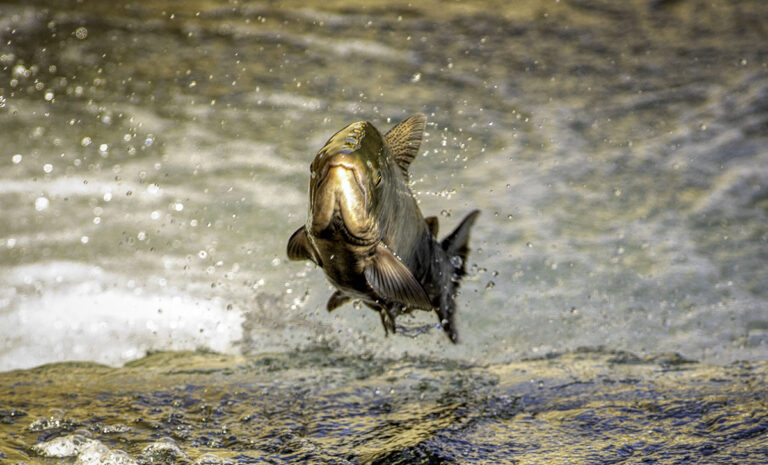Photo by Steve Martarano By Rachel Becker, Cal Matters
With salmon populations throughout California declining for decades and facing the threat of extinction, Gov. Gavin Newsom on Tuesday unveiled a state strategy aimed at protecting and restoring the iconic species “amidst hotter and drier weather exacerbated by climate change.”
The blueprint calls for tearing down dams and improving passages for migrating salmon, restoring flows in key waterways, modernizing hatcheries to raise fish and taking other steps to help Chinook, coho, steelhead and other migrating fish.
“We’re doubling down to make sure this species not only adapts in the face of extreme weather but remains a fixture of California’s natural beauty and ecosystems for generations to come,” Newsom said in a statement.
Fewer than 80,000 Central Valley fall-run chinook salmon — a mainstay of the state’s salmon fishery — returned to spawn in 2022, according to the California Department of Fish and Wildlife. It’s a decline of nearly 40% from the previous year, and the lowest since 2009. Last year, all salmon fishing was canceled in California and much of Oregon due to low numbers projected to return from the Pacific.
The threats to California’s salmon are many — dams that block migration, diversions that drain rivers, ocean conditions and climate change. And the effects of the decline are wide-ranging: loss of fishery jobs, impacts on tribes’ food security and cultures, no local supplies for restaurants and consumers, and more.
Many of the projects and solutions outlined in Newsom’s report are already underway, or under the direction of the federal government, tribes and conservation groups. Included are the historic demolition of four aging hydroelectric dams on the Klamath River, and reintroduction of endangered Sacramento River winter-run Chinook eggs to the McCloud River upstream of Lake Shasta.
Regulatory efforts include establishing minimum flows on the fiercely contested Scott and Shasta Rivers, and the long-delayed and controversial management plan for the Bay-Delta, the heart of the state’s water supply.
Some environmental groups called the plan a ploy to […]
Full article: mavensnotebook.com

